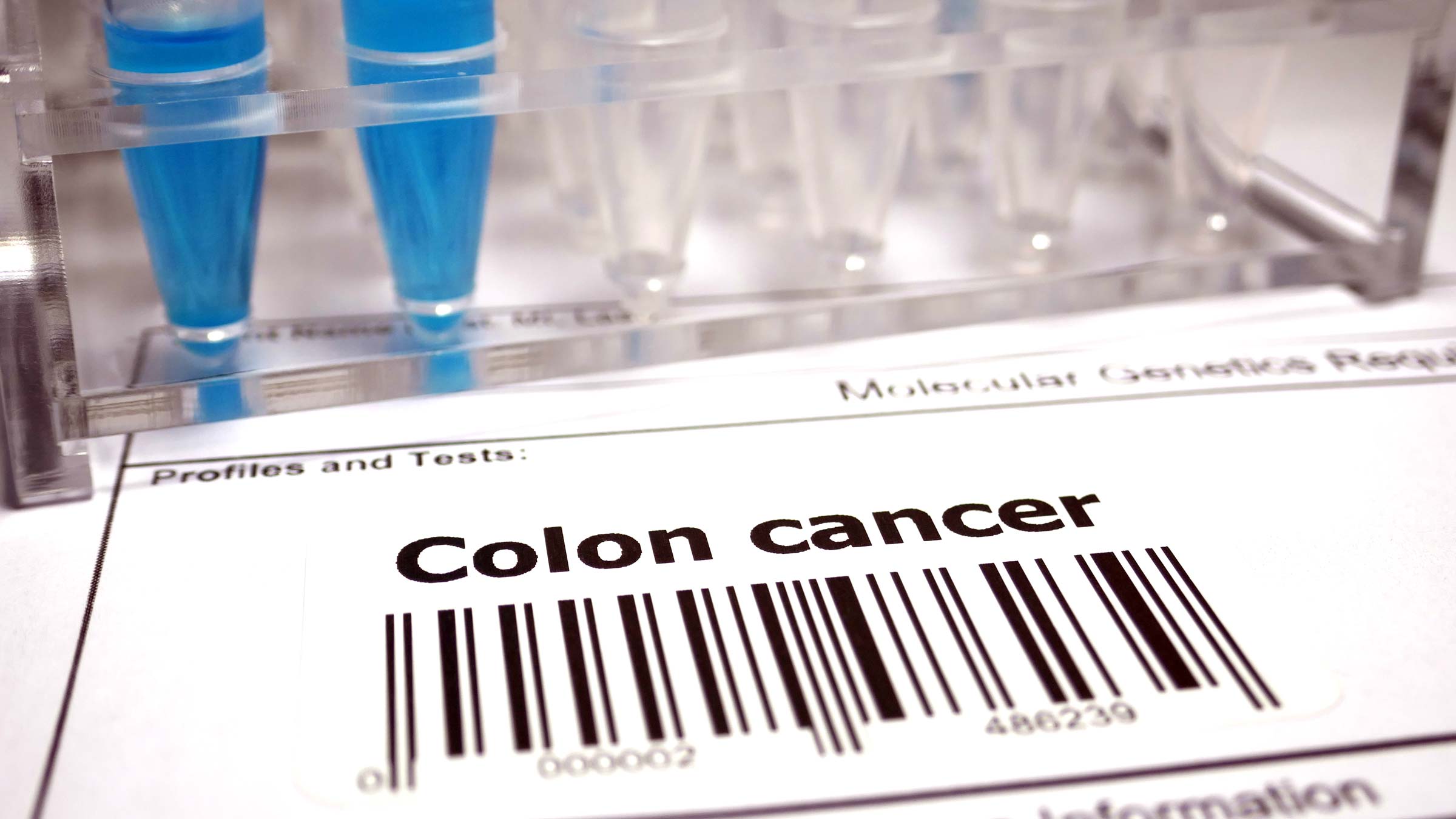
Because we can screen for it, allowing us to find and remove polyps in the colon before they turn into cancerous tumors, colon cancer is one of the most preventable forms of cancer. We recommend that people of average risk begin getting screened/tested for colon cancer at age 45.
The other good news is that colon cancer is one of the few cancers that has several options for screenings, including those you can easily do yourself by collecting stool in your own bathroom. These at-home tests have made screening simpler and widely available.
Ask your doctor about your best option. While a colonoscopy is the best test for colon cancer screening, getting screened by a non-invasive method is much better than not getting screened at all. Screening is important because, when colon cancer is caught in precancerous stages, it’s 100% treatable, and in early stages, chances of cure are very high. But when patients are diagnosed at a late stage, chances of survival are extremely poor.
What are the different types of at-home stool-based colon cancer tests?
There are three types of stool-based tests. Two identify microscopic quantities of blood in the stool: the FIT (fecal immunochemical test) and the high sensitivity guaiac test (sometimes referred to as the guaiac-based fecal occult blood test or gFOBT). Results from these tests are reported either as positive or negative. If a result is positive, it means that blood was detected in the stool in microscopic quantities, and we then do a colonoscopy to follow up. If the result is negative, it means no blood was detected, and we repeat the stool-based test in one year.
The third type of stool-based test is the multi-target DNA test known by its brand name, Cologuard. In addition to identifying the presence of microscopic quantities of blood, it identifies some DNA markers that are found in precancerous polyps and colon cancer. Results are reported the same way. If they are positive, we follow up with a colonoscopy. If they are negative, we repeat the DNA test in three years.
Once submitted, tests results are generally available within two to three weeks.
If blood is detected in an at-home stool test, does it mean I have cancer?
Not always. The blood vessels on colon cancer cells aren’t normal, and when they bleed, they cause blood in the stool. However, many other things can cause blood in the stool. The most common cause is hemorrhoids. So, if somebody has hemorrhoids, blood might be detected in a stool test. Other causes of blood in the stool are inflammatory bowel diseases, like Crohn's disease, colitis or diverticulosis or ulcers. That's why a follow-up colonoscopy is important if blood is found in the stool test.
Are at-home stool tests good enough to screen for colon cancer?
Colonoscopy is considered the gold standard for cancer screening because it allows us to see polyps and also take them out. However, studies have shown that stool-based tests are also sensitive, meaning they’re reliable for picking up signs of colon cancer. They’re recommended only for people with no signs or symptoms of colon cancer who are of average risk.
Who shouldn’t use at-home stool tests to screen for colon cancer?
A colonoscopy should be used to screen for colon cancer in people who have symptoms or risk factors.
Colon cancer symptoms include:
- Weight loss
- Change in bowel habits, such as diarrhea
- Visible blood in the stool
Colon cancer risk factors include:
- Family history of colon cancer, especially in siblings, parents or grandparents before age 60
- Family history of precancerous polyps
- A history of radiation treatment to the pelvic/lower abdominal area
- A history of inflammatory bowel disease, like Crohn's disease or ulcerative colitis
- Certain genetic syndromes, including Lynch syndrome and familial polyposis syndrome
How do I get a stool-based colon cancer test?
Stool-based tests are mailed to you at home through a prescription from your doctor. They come in kits with easy-to-follow instructions. It’s pretty simple to collect your stool and then mail it to a lab for testing. In the case of Cologuard, the company also calls the patient.
When should I get screened for colon cancer?
If you’re at average risk, we recommend starting at the age of 45 regardless of your race or sex. If you have risk factors, it’s recommended to start screening earlier, usually at age 40 or earlier. The age depends on the specific risk factor you have. Your doctor or a digestive diseases specialist (also known as a gastroenterologist) can help you determine when you should start screening. If you have any of the symptoms of colon cancer, then you should visit your doctor to determine if you need a diagnostic colonoscopy.
What are other options for colon cancer screening?
- Colonoscopy involves putting a narrow tube with a light and a camera into your colon and allows us to view the entire colon. Prior to a colonoscopy, a patient will have to prepare, with a special diet for a few days, usually only liquid for at least 24 hours before the colonoscopy, and take medications to help clear out the colon. If no polyps are found, in an average risk individual, the colonoscopy is repeated in 10 years.
- Sigmoidoscopy is similar, but it allows us to look at only the left side of the colon and sometimes at part of the horizontal portion of the colon, called the transverse colon. Preparation involves one or two enemas. If nothing is found, in an average risk individual, it’s recommended to repeat it in five years. If we do a sigmoidoscopy and a FIT test and both are negative, it’s recommended to repeat the combination of the two tests in 10 years.
- A virtual or CT colonography can also be used to look for polyps. A patient is given liquid to drink to help stretch the colon and a CT scan is performed. If a polyp is found, a colonoscopy is the next step. If nothing is found, it’s repeated in five years.
- A colon capsule is a new test where a small capsule with a camera is swallowed. As it passes through the colon, it takes pictures of the lining. These images are sent to a recording device that you keep close to you during the test. The pictures are reviewed by a trained specialist. If no suspicious growths are seen, then the test can be repeated in five years. If anything suspicious is seen, a colonoscopy is recommended to visualize it better and remove it if it looks pre-cancerous.
What else can I do to help prevent colon cancer?
- Eat fewer ultra-processed foods – foods that have a lot of added salt, sugar, fat, preservatives, additives and/or artificial colors. Examples are doughnuts, pizza, candy, soft drinks and chips.
- Eat less saturated fat. Saturated fat is found in butter, bacon, sausage and meat fat.
- Eat more fresh fruits and vegetables.
- Eat more fiber. Examples are vegetables, whole grains, beans and brown rice.
- Be less sedentary and more physically active.
- Quit smoking cigarettes, if you’re a smoker.
- If you’re overweight, lose weight.

Schedule a screening colonoscopy at Ohio State
Call 614-293-6255 to schedule your colonoscopy today.
Learn more about colonoscopy




